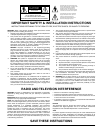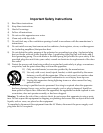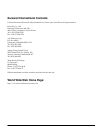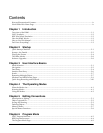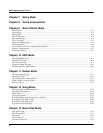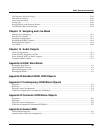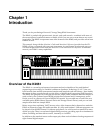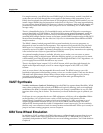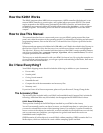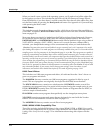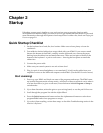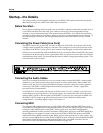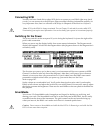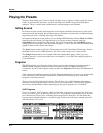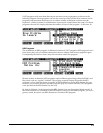
1-2
Introduction
VAST Synthesis
For sample memory, your K2661 has one SIMM (single, in-line memory module) installed in a
socket that you can reach through the access panel on the bottom of the instrument. If your
K2661 does not already have the maximum of 128 megabytes of Sample RAM installed, you can
install a larger SIMM using the instructions in the
Musician’s Reference.
The most important thing
for you to know about Sample RAM, however, is that it is not battery-backed; RAM samples are
permanently erased from memory when you power down. Fortunately, we’ve made offline
storage a snap.
There’s a SmartMedia slot for 3.3v SmartMedia cards, and also a
SCSI
port for connecting an
external hard disk or CD-ROM drive. You’ll find all this storage potential extremely useful for
saving and loading samples, which can also be transferred to and from the K2661 using the
standard MIDI sample transfer format, or the faster, parallel SMDI sample transfer format (SCSI
Musical Data Interchange). See the
Musician’s Reference
for information about MIDI and SMDI
sample transfers.
The K2661’s battery-backed program RAM can store hundreds of your own programs, or
thousands of notes recorded in the sequencer. This sequencer (Song mode) lets you play back
MIDI type 0 or 1 sequences, record and play back your own songs, and record multi-timbral
sequences received via MIDI. The battery should last for several years; instructions for replacing
it are in the
Musician’s Reference
(provided on CD-ROM).
An optional sampling feature is available, allowing you to make your own mono or stereo
samples using analog or digital inputs. With the sampling option, you can also use Live mode,
which enables you to take an input signal and route it through the K2661’s VAST algorithms—so
you can apply Kurzweil DSP and effects to any sound.
There’s also digital input/output (I/O) in ADAT format, which provides eight channels for
digital audio input and output, as well as a stereo digital output in AES/EBU or S/PDIF
formats.
And, of course, there’s the incomparable Kurzweil sound. The K2661 comes to you with
hundreds of programs (called patches, presets, voices, etc. on other synths). There are also about
200 multi-zone performance setups. Many of these setups use note triggers to play factory-
recorded songs that provide grooves and arpeggiation that make great templates for
performance or recording.
VAST Synthesis
Variable Architecture Synthesis Technology
gives the K2661 its unprecedented flexibility. While
many other synthesizers offer a fixed set of
DSP
tools (typically filtering, pitch, and amplitude
modulation) the K2661’s Variable Architecture lets you arrange a combination of any five DSP
functions from a long list of choices. The functions you choose define the type of synthesis you
use.
Each layer of every program has its own DSP architecture, which we call an
algorithm
. Within
each algorithm, you can select from a variety of DSP functions. Each function can be
independently controlled by a variety of sources including LFOs, ASRs, envelopes, a set of
unique programmable functions (FUNs), as well as any MIDI control message. The many
different DSP functions and the wealth of independent control sources give you an extremely
flexible, truly vast collection of tools for sound creation and modification. When you’re ready to
jump in and start creating programs, turn to Chapter 6.
KB3 Tone Wheel Emulation
In addition to VAST synthesis, the K2661 offers many oscillator-based programs that give you
the classic sound of tone-wheel organs like the Hammond B 3™. KB3 mode, as we call it, is
completely independent of VAST, and has its own set of editing procedures. You’ll find details in
Chapter 6.



